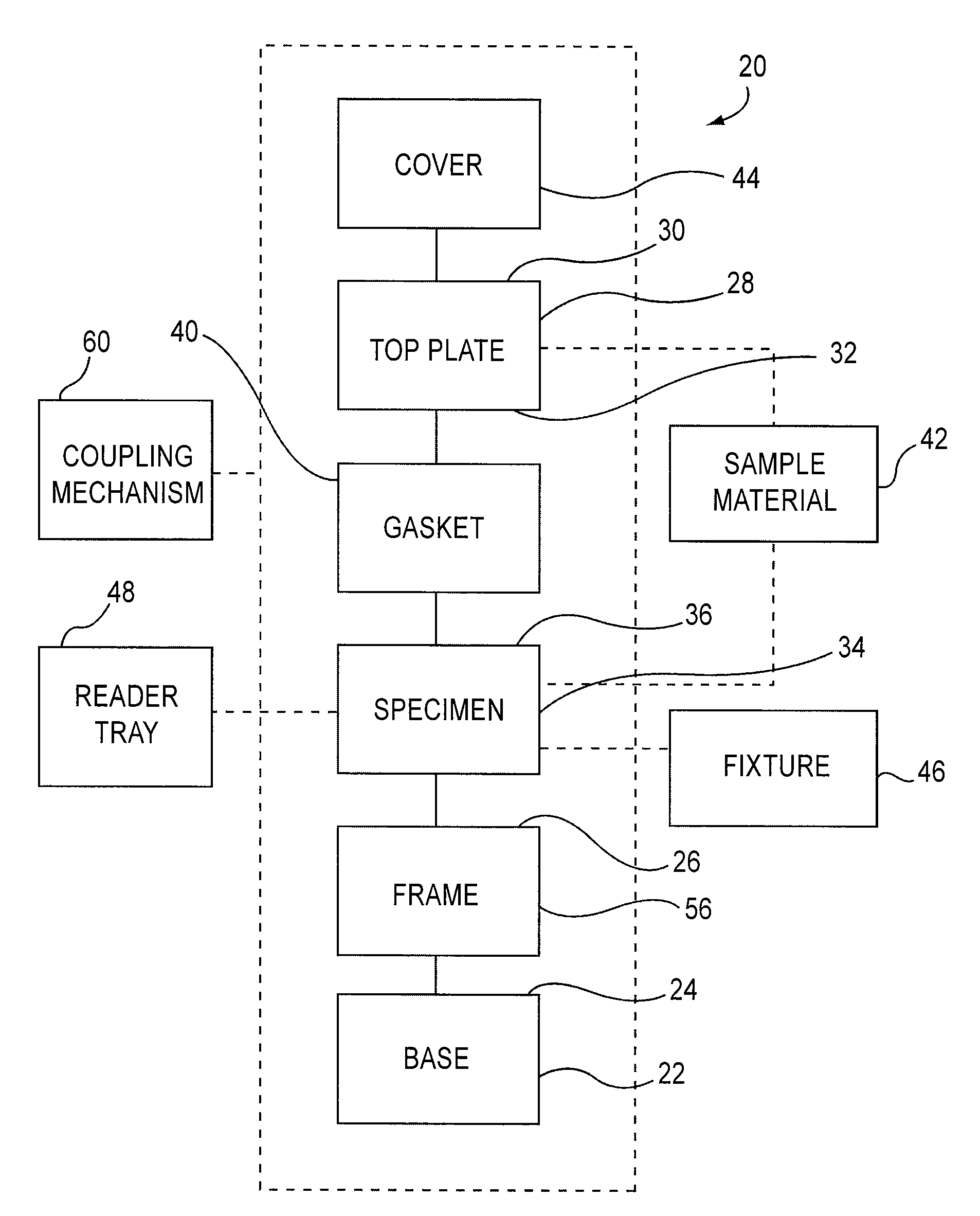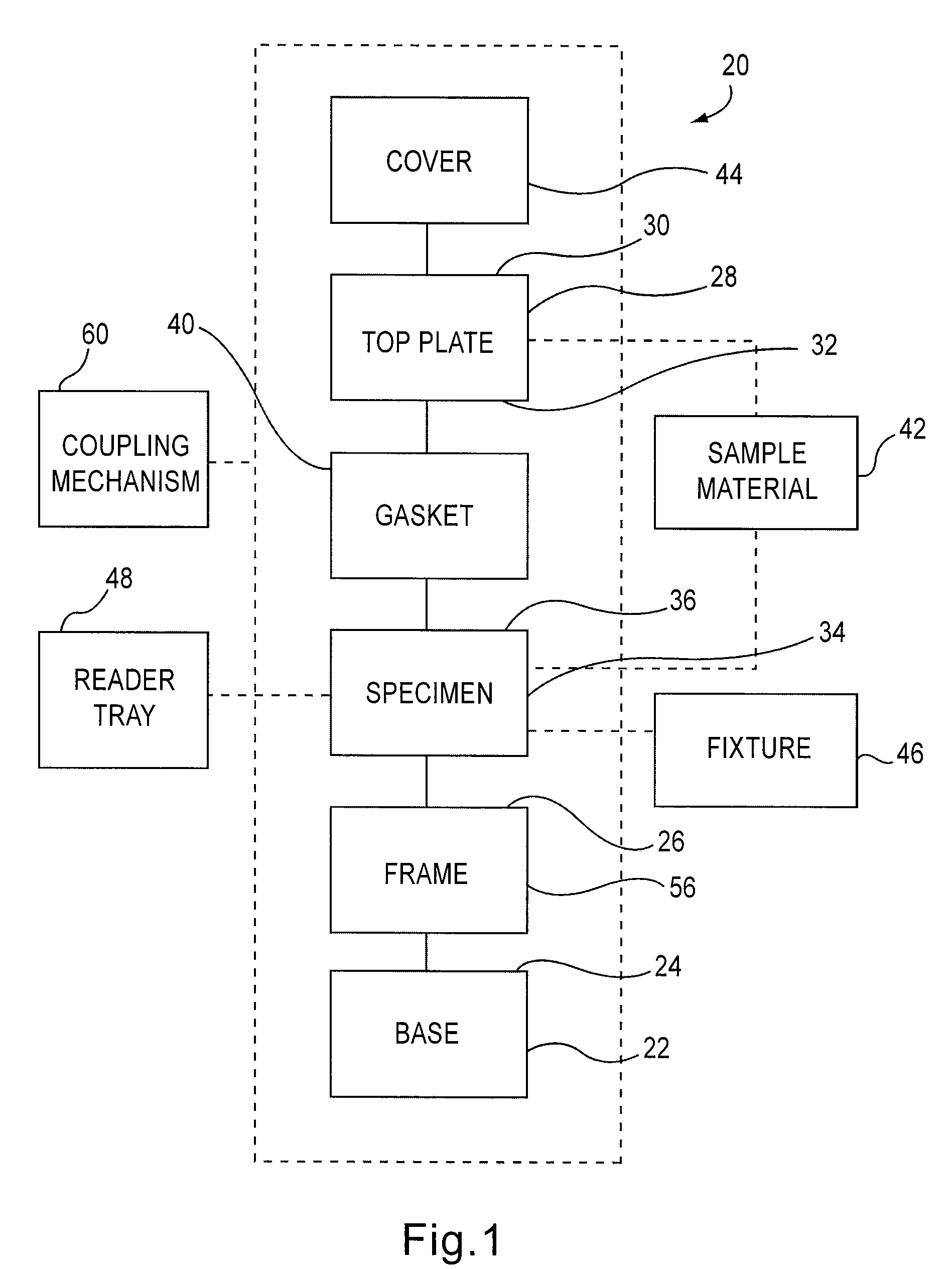Apparatus and method of performing high-throughput cell-culture studies on biomaterials
a cell culture and high-throughput technology, applied in the field of test devices, can solve the problems of increased contamination and/or damage due to handling, inability to use high-throughput testing approaches for evaluation of biomaterials, and difficulty in handling individual coupons
- Summary
- Abstract
- Description
- Claims
- Application Information
AI Technical Summary
Problems solved by technology
Method used
Image
Examples
Embodiment Construction
[0026]The apparatuses and methods described herein can be used to test the effects of various sample materials on one or more specimens, such as a specimen constructed with a biomaterial. The apparatuses and methods provide for high-throughput testing and improved performance and accuracy over known test apparatuses and methods. For example, in some embodiments, the release of residuals, biological response and durability of variations on a single material or multiple materials can be tested within a single test and using multiple replicates. The specimen can be optionally coated with, for example, a polymer material, and the effects of various sample materials on the polymer material can be evaluated during a single test cycle. The apparatuses and methods described herein can be used for evaluation of both biomaterials (e.g., biocompatible materials) and material evaluation from non-biological perspectives. For example, the apparatuses and methods can be used to test metals, polyme...
PUM
| Property | Measurement | Unit |
|---|---|---|
| time | aaaaa | aaaaa |
| time period | aaaaa | aaaaa |
| durability | aaaaa | aaaaa |
Abstract
Description
Claims
Application Information
 Login to View More
Login to View More - R&D
- Intellectual Property
- Life Sciences
- Materials
- Tech Scout
- Unparalleled Data Quality
- Higher Quality Content
- 60% Fewer Hallucinations
Browse by: Latest US Patents, China's latest patents, Technical Efficacy Thesaurus, Application Domain, Technology Topic, Popular Technical Reports.
© 2025 PatSnap. All rights reserved.Legal|Privacy policy|Modern Slavery Act Transparency Statement|Sitemap|About US| Contact US: help@patsnap.com



